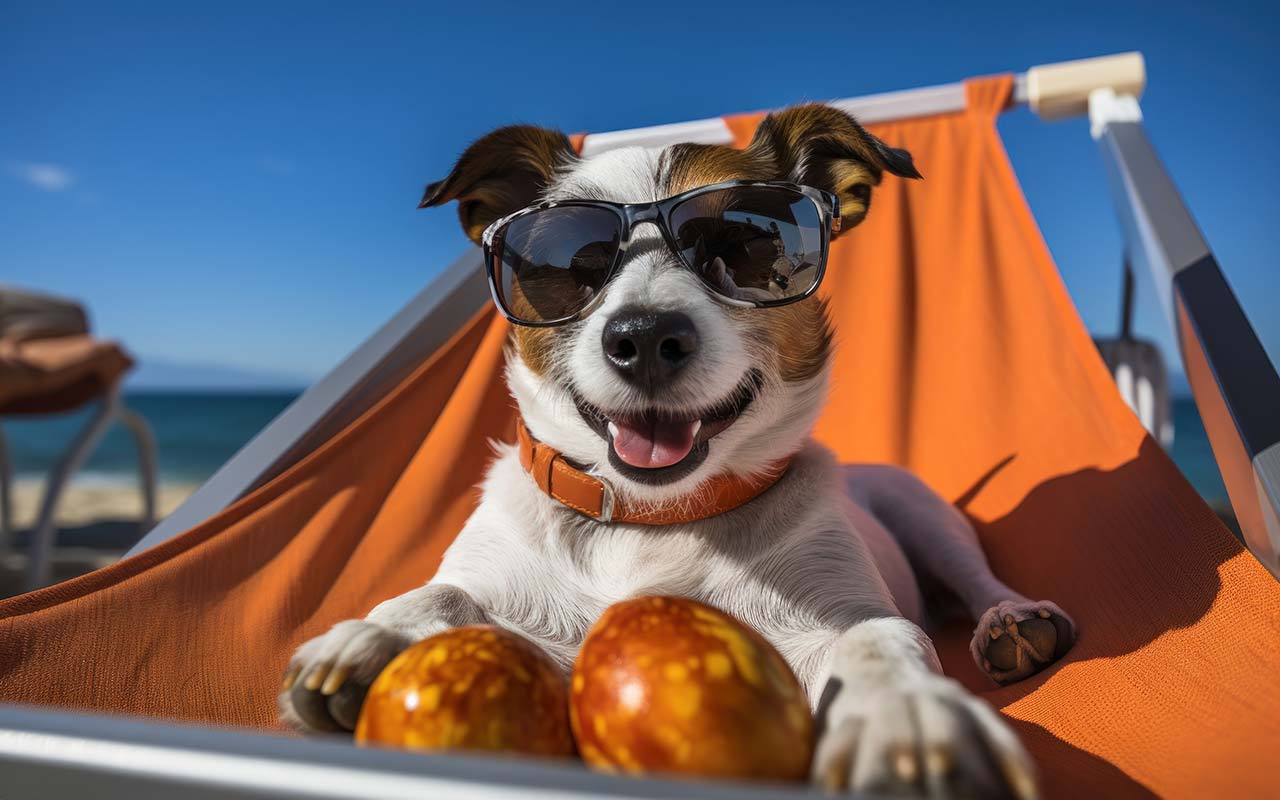Summer Dog Exercise: Gentle Routines for Hot Weather
As summer temperatures soar, adjusting your dog’s exercise routine is crucial to ensure they stay safe and avoid overheating. High heat can be extremely dangerous for dogs, leading to heatstroke and other heat-related health issues. Here’s how you can modify your dog’s activities to suit the summer climate while keeping them active and healthy.
1. Understanding the Risks of Summer Heat
Before you adjust your dog’s exercise routine, it’s important to understand the risks associated with exercising in hot weather.
- Heatstroke in Dogs: Dogs can quickly succumb to heatstroke if they overexert themselves in hot weather. Symptoms include excessive panting, drooling, reddened gums, vomiting, and an elevated heart rate.
- Breed-Specific Considerations: Some breeds, especially those with thick coats or brachycephalic (short-nosed) breeds like Bulldogs and Pugs, are more susceptible to heat-related problems.
2. Timing is Everything
Choosing the right time to exercise your dog during the summer can make a significant difference in their safety and comfort.
- Avoid Midday Heat: Exercise your dog in the early morning or late evening when temperatures are cooler.
- Watch the Humidity: High humidity can increase the risk of overheating because it reduces the effectiveness of panting.
3. Choosing Appropriate Summer Dog Exercise
Opt for gentler, more moderate activities that won’t overexert your dog in the summer heat.
- Walks Instead of Runs: Replace jogging or running with walking. Keep the pace leisurely to avoid overheating.
- Swimming: If possible, let your dog swim. Swimming is an excellent low-impact exercise that can help them stay cool.
- Indoor Play: On particularly hot days, indoor play sessions can substitute for outdoor exercise. Use toys and games to keep your dog engaged.
4. Hydration and Cooling
Keeping your dog hydrated and cool during and after exercise is key to preventing heat-related illnesses.
- Always Provide Water: Bring a portable water bottle or a collapsible bowl on your walks. Offer water to your dog frequently.
- Use Cooling Vests or Mats: Cooling vests or mats can help lower your dog’s body temperature and prevent overheating.
5. Recognize the Signs of Overheating
Knowing the signs of overheating can help you take immediate action to prevent a heatstroke.
- Signs to Watch For: Excessive panting, drooling, lethargy, uncoordinated movements, or collapse.
- Immediate Action: If you notice any signs of overheating, move your dog to a shaded or air-conditioned area and provide them with water. If symptoms persist, contact your vet immediately.
6. Adjusting to Your Dog’s Needs
Each dog is unique, and their tolerance to heat can vary based on factors like age, breed, and health.
- Monitor Your Dog Closely: Pay close attention to how your dog responds to summer exercise. Adjust the intensity and duration based on their feedback.
- Consult Your Vet: For dogs with health issues or older dogs, consult your vet to design an appropriate exercise plan.







